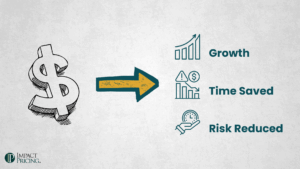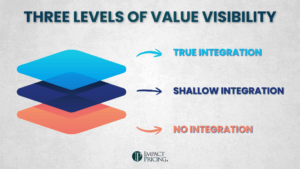You can listen to the full audio version of this blog we call — Blogcast.
Over the years, I’ve had many conversations with other pricing professionals about the definition of value-based pricing (VBP). Although there may not be consensus, I’ve come upon a single definition that has never failed me.
Value-based pricing means charging what a buyer is willing to pay.
Obviously, this is impossible to do perfectly. You can’t read a buyer’s mind, so you don’t know what any buyer is willing to pay. In fact, think about any one of your own purchases. For any item you are considering buying, you don’t know what you are willing to pay. How could a salesperson or pricing person know? So, it’s impossible to price perfectly. For this reason, I think of VBP as an attitude or a goal.
Many colleagues define VBP the way Tom Nagle used it in his description of EVE (Economic Value Estimation) analysis. You start with the price of your competitor’s product. You then add the value of your positive differentiation and subtract the value of your competitor’s positive differentiation. I like this, but it’s only a subset of what I consider VBP.
The word “value” in EVE is a little ambiguous. Economic Value means incremental profit. You could add up the incremental profit from all of the differentiations. However, a buyer won’t allow the seller to capture all of the economic value. The buyer and seller must share any incremental economic value for the transaction to occur. The question then comes back to how much a buyer will pay for that incremental economic value.
The other problem with using Economic Value is that sometimes objects don’t produce incremental profit. This is especially true in B2C. Imagine you are comparing two shirts. They look identical, but one has higher-quality stitching than the other. How much more profit will you make if you buy the one with better quality? That’s the wrong question. The real question we need to answer is, how much would they be willing to pay for the one with better stitching?
Even if we replace the word “value” with “willingness to pay” in the EVE definition, it still leaves a gap in thinking about VBP. What if there is no competitive alternative? That means a seller is competing with the status quo. I call these Will I decisions because buyers are only deciding whether or not to buy. They aren’t deciding between competitive alternatives. Their thinking is different. They are simply looking at the value of solving a problem. Most importantly, buyers are not price-sensitive in these decisions. Small price changes do not change a buyer’s mind.
The definition I use is powerful and simple to understand. It incorporates the EVE analysis when appropriate. It supports using conjoint, Van Westendorp, Gabor Granger, a-b testing, and any other techniques companies may use to estimate buyers’ willingness to pay. It considers concepts of context and practically begs for price segmentation.
What I like most about it, though, is that it’s never done. A seller can always improve at determining and charging based on willingness to pay.
My advice to every customer is to adopt Value-Based Pricing. Focus on understanding what your buyers are willing to pay and then price accordingly.
Share your comments on the LinkedIn post.
Now, go make an impact!
 Tags: pricing, pricing foundation, pricing professional, value based pricing, value-based, value-based pricing
Tags: pricing, pricing foundation, pricing professional, value based pricing, value-based, value-based pricing













